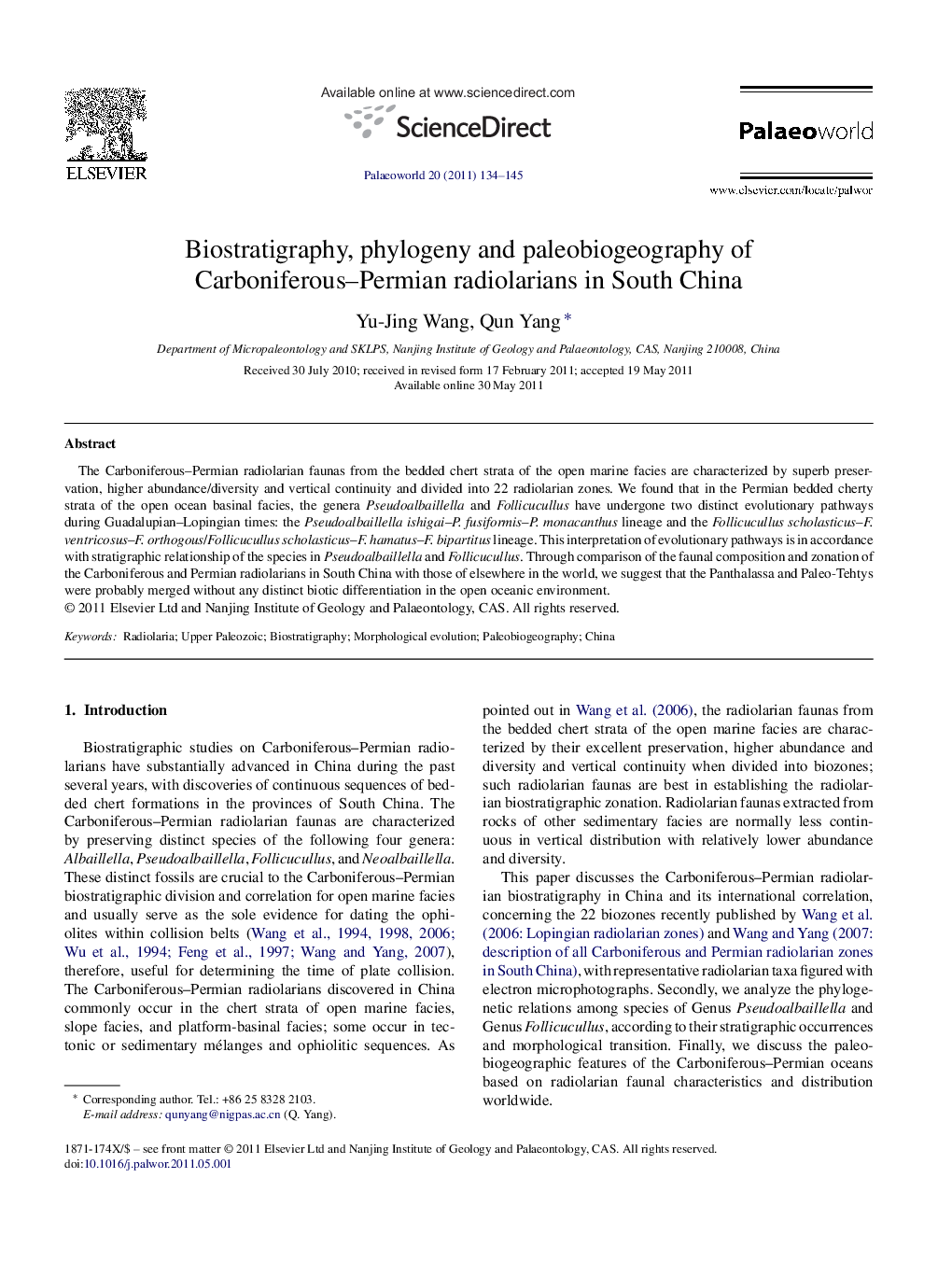| Article ID | Journal | Published Year | Pages | File Type |
|---|---|---|---|---|
| 4749882 | Palaeoworld | 2011 | 12 Pages |
The Carboniferous–Permian radiolarian faunas from the bedded chert strata of the open marine facies are characterized by superb preservation, higher abundance/diversity and vertical continuity and divided into 22 radiolarian zones. We found that in the Permian bedded cherty strata of the open ocean basinal facies, the genera Pseudoalbaillella and Follicucullus have undergone two distinct evolutionary pathways during Guadalupian–Lopingian times: the Pseudoalbaillella ishigai–P. fusiformis–P. monacanthus lineage and the Follicucullus scholasticus–F. ventricosus–F. orthogous/Follicucullus scholasticus–F. hamatus–F. bipartitus lineage. This interpretation of evolutionary pathways is in accordance with stratigraphic relationship of the species in Pseudoalbaillella and Follicucullus. Through comparison of the faunal composition and zonation of the Carboniferous and Permian radiolarians in South China with those of elsewhere in the world, we suggest that the Panthalassa and Paleo-Tehtys were probably merged without any distinct biotic differentiation in the open oceanic environment.
